Big Ideas behind Small Things
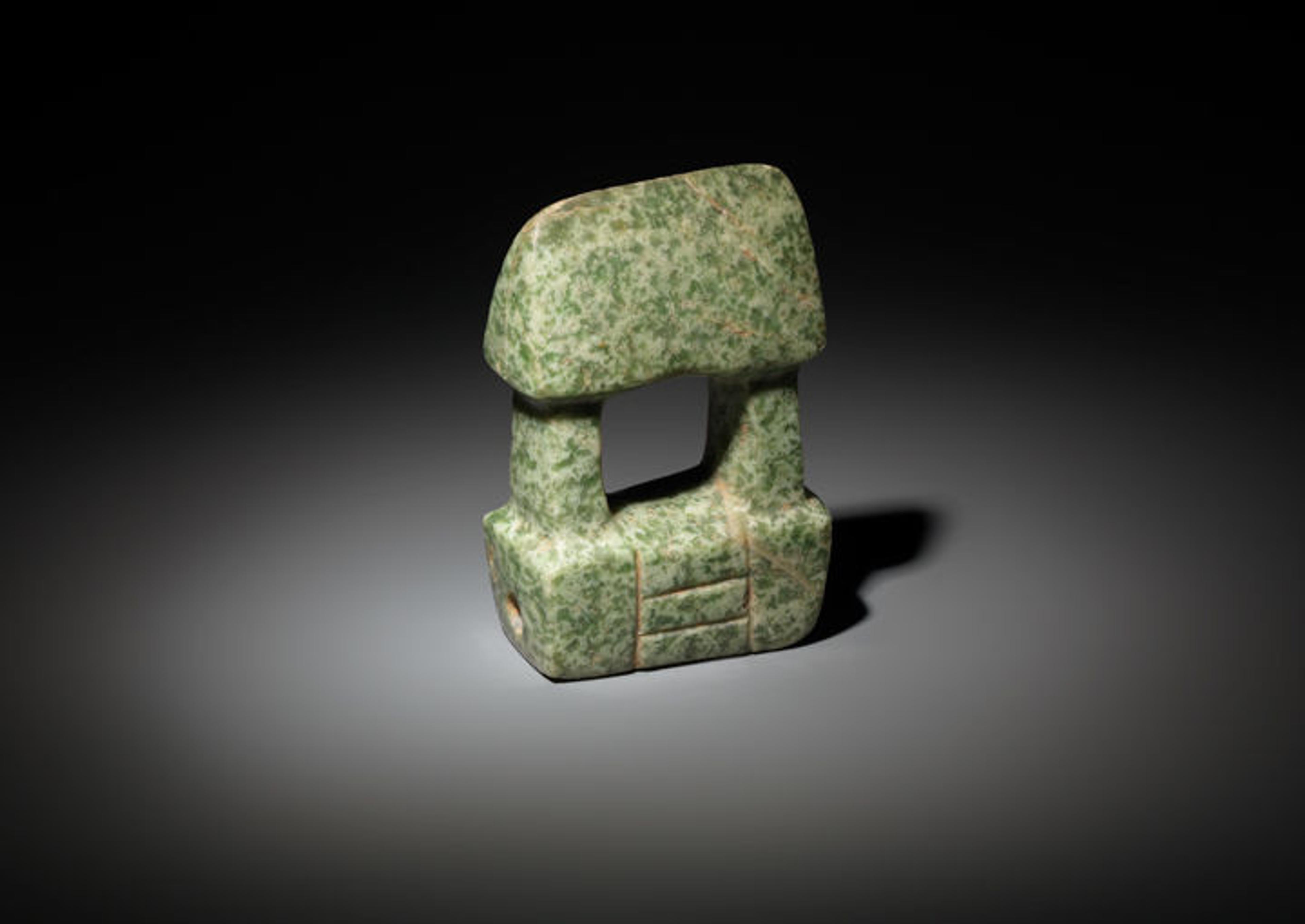
Temple model, 200 B.C.–A.D. 500. Mexico, Mesoamerica, Guerrero, Balsas River region. Mezcala. Greenstone; H. 2-1/4 in. The Metropolitan Museum of Art, New York, Bequest of Arthur M. Bullowa, 1993 (1994.35.700)
«Along with material, color, line, shape, and context, scale is fundamental to the making and reception of works of art. From ancient times to the present day, scale—a ratio or relative dimension—is one of the ways in which artists convey meaning. A crucial aspect of architecture and sculpture in particular, scale has a direct bearing on the circulation of objects and, most crucially, on the relationship between the viewer and the work of art.»
In contemporary art, scale may become a springboard for thinking about big subjects, as in Charles Simonds's 1981 work Dwellings, a three-part installation on view in one of the stairway landings at The Met Breuer and across the street on the facade of 940 Madison Avenue (now an Apple Store). These tiny buildings and ritual spaces, part of a larger project about imagined communities, touch on broader issues of time, place, and identity. Scale is not always about the miniature, however; at the other end of the spectrum are artists such as Claes Oldenburg and Coosje van Bruggen, who, through making the mundane monumental, initiated a dialogue about specific subjects, contexts, and ideas.
Scale was no less important in the ancient world. The exhibition Design for Eternity: Architectural Models from the Ancient Americas, on view at The Met Fifth Avenue through September 18, 2016, provides an opportunity to think about scale in the past, particularly monumental things writ small: architecture in miniature. The exhibition features some 50 Precolumbian architectural models—small-scale architectural effigies made in ceramic, stone, wood, and metal—representing a variety of building types, from modest domestic structures to elaborate palaces, small temples, and ball courts. In style they range from exquisite temples sculpted in hardstone just a few inches high to larger-scale representations—a foot or more long—in ceramic and wood "inhabited" by scores of individuals.

House model, 100 B.C.–A.D. 200. Mexico, Nayarit. Ceramic; H. 12 x W. 10 x D. 6 3/4 in. (30.5 x 25.4 x 17.1 cm). The Metropolitan Museum of Art, New York, Gift of Joanne P. Pearson, in memory of Andrall E. Pearson, 2015 (2015.306)
A large and diverse group of works, these models have been found from Mexico to the Andean region of South America and can be dated from the first millennium B.C. to after the arrival of Europeans in the early 16th century. Not architectural models in the traditional sense of aids for the design process, Precolumbian architectural effigies seem to have been more about the embodiment of ideas for ritual purposes. Most were presumably placed in burials, where they may have served as symbolic representations of ritual architecture, ensured specific conditions in an afterlife, or served as dwellings for divine beings.
Left: Architectural vessel, 200–50 B.C. Peru. Salinar. Ceramic; H. 5 7/8 in. (15 cm). American Museum of Natural History, New York (41.2/8671)
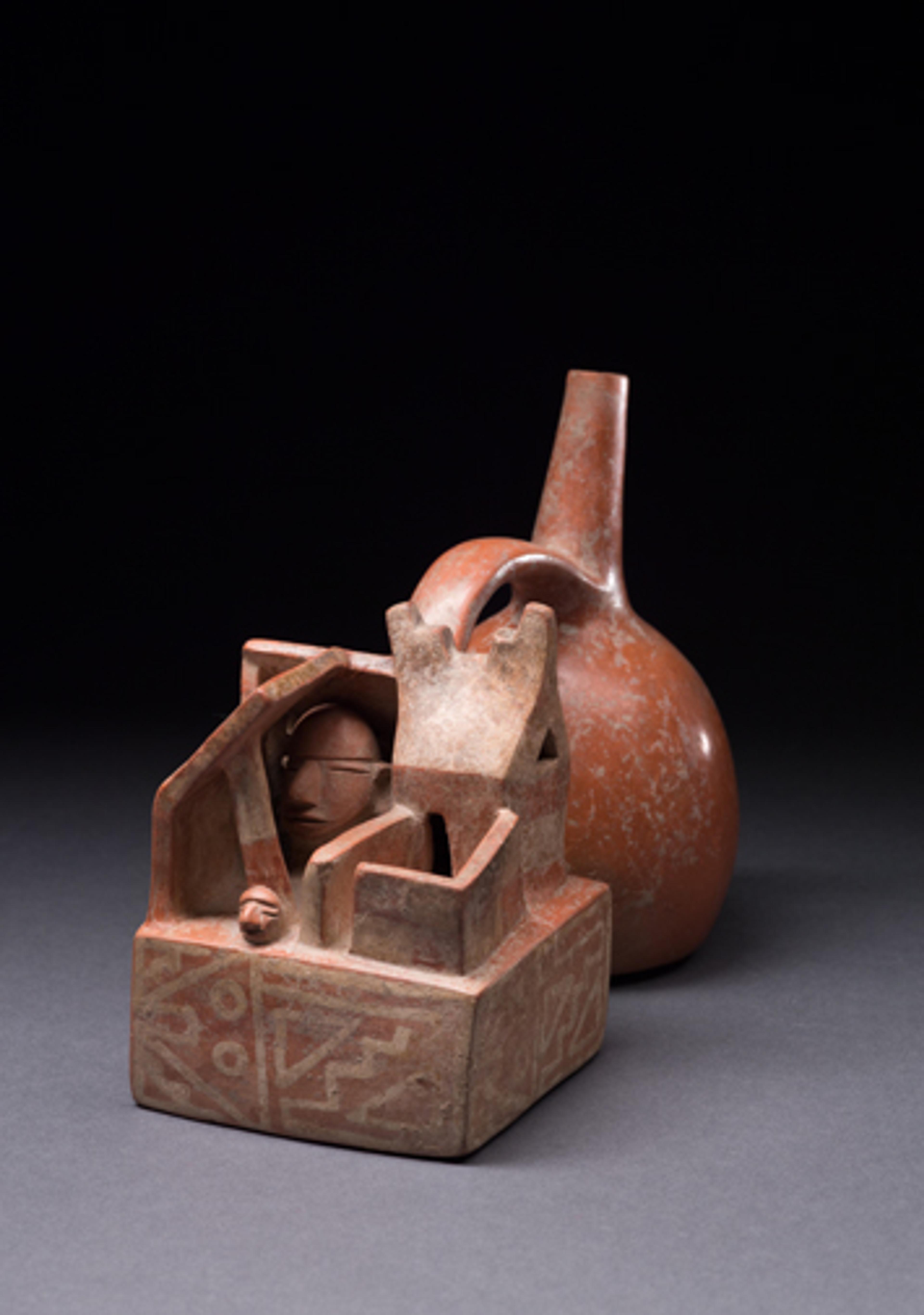
The common thread among all the models is the idea of something grand being represented at a small scale, a powerful concept that has been studied across cultures and in a range of objects, from ancient votive offerings to modern toys. Tiny musical instruments, weapons, tools, and other items of hammered silver were deposited as offerings in ancient Peru. Found in tombs or assembled as groups and buried in sacred places, these miniature objects reference essential possessions and their associated ideas.
Feathered garments are perhaps the most striking miniature objects from ancient Peru. Tiny versions of women's dresses and men's tunics were used in offerings, and they replicate to an impressive degree the design and detailing found in full-size garments. Worn over a loincloth, tunics, or uncus, were the primary element of male attire in the ancient Andes. The finest examples were made of finely woven tapestry, but the Inca and their predecessors also created remarkable garments using the brightly colored feathers of tropical birds.

Miniature tunic, 12th–13th century. Peru, Ica Valley. Ica. Cotton, feathers; H. 11 1/8 x W. 11 3/8 in. (28.3 x 28.9 cm). The Michael C. Rockefeller Memorial Collection, Bequest of Nelson A. Rockefeller, 1979 (1979.206.673)
Right: Feathered tunic, 13th–14th century. Peru. Wari. Cotton, feathers; W. 30 x H. 35 in. (76.2 x 88.9 cm). The Metropolitan Museum of Art, New York, Gift of George D. Pratt, 1929 (29.146.25)
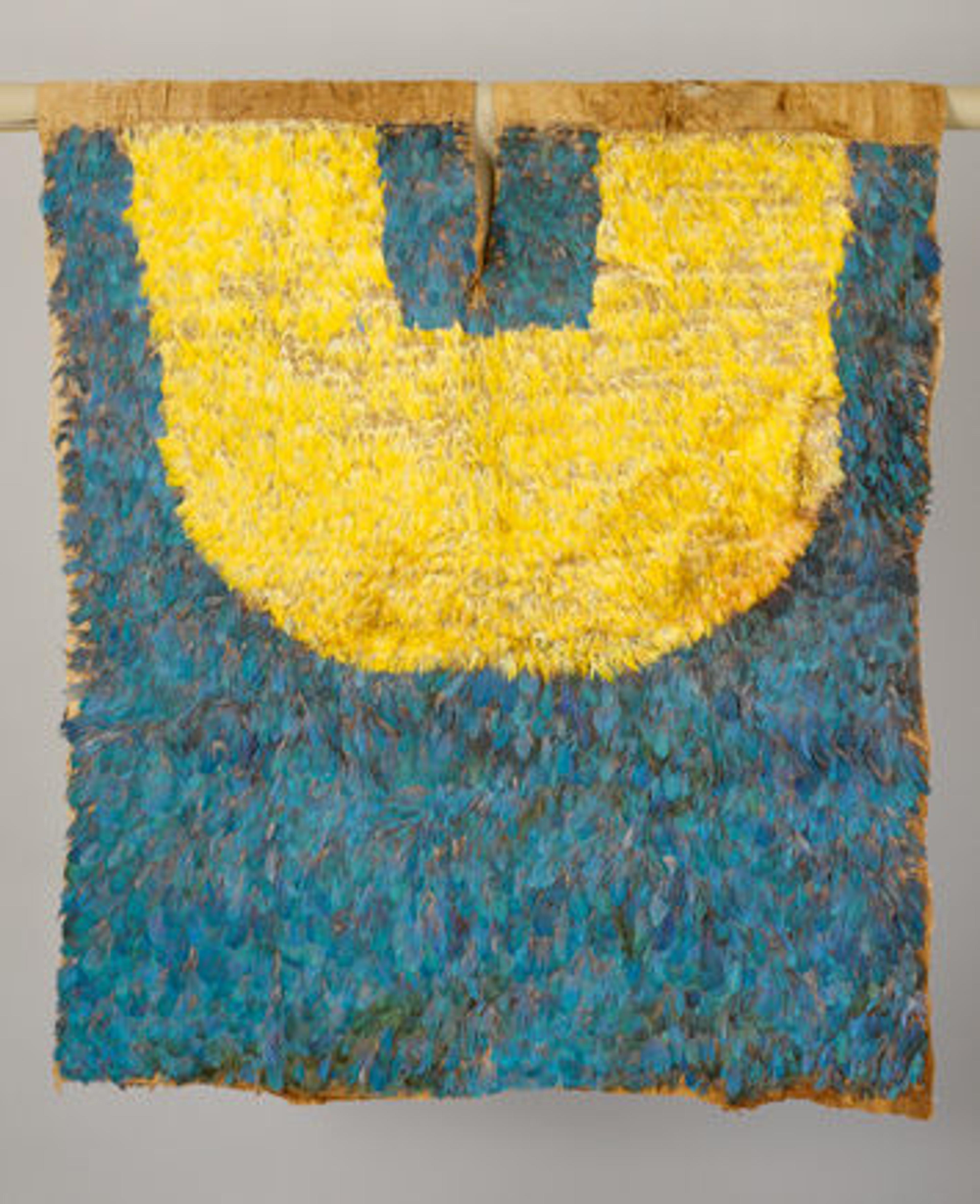
Perhaps the most famous examples of miniature garments come from the high-altitude shrines of the Inca. Figurines made of gold, silver, and copper were dressed in tiny, exquisite tapestry tunics and dresses as part of an array of offerings to divine powers. Such offerings have been found at a variety of sacred places, including islands and lakes, but perhaps the most spectacular finds have been made by archaeologist Johan Reinhard and his colleagues on Mount Ampato, near Arequipa in Peru, at 20,630 feet (6,288 m), and Mount Llullaillaco, at the border of Argentina and Chile, at some 22,110 feet (6739 m).
Left: Female figure, 15th–early 16th century. Peru. Inca. Gold; H. 5 7/8 x W. 1 3/8 in. (14.9 x 3.5 cm). The Metropolitan Museum of Art, New York, Gift of Louise Reinhardt Smith, 1995 (1995.481.5)
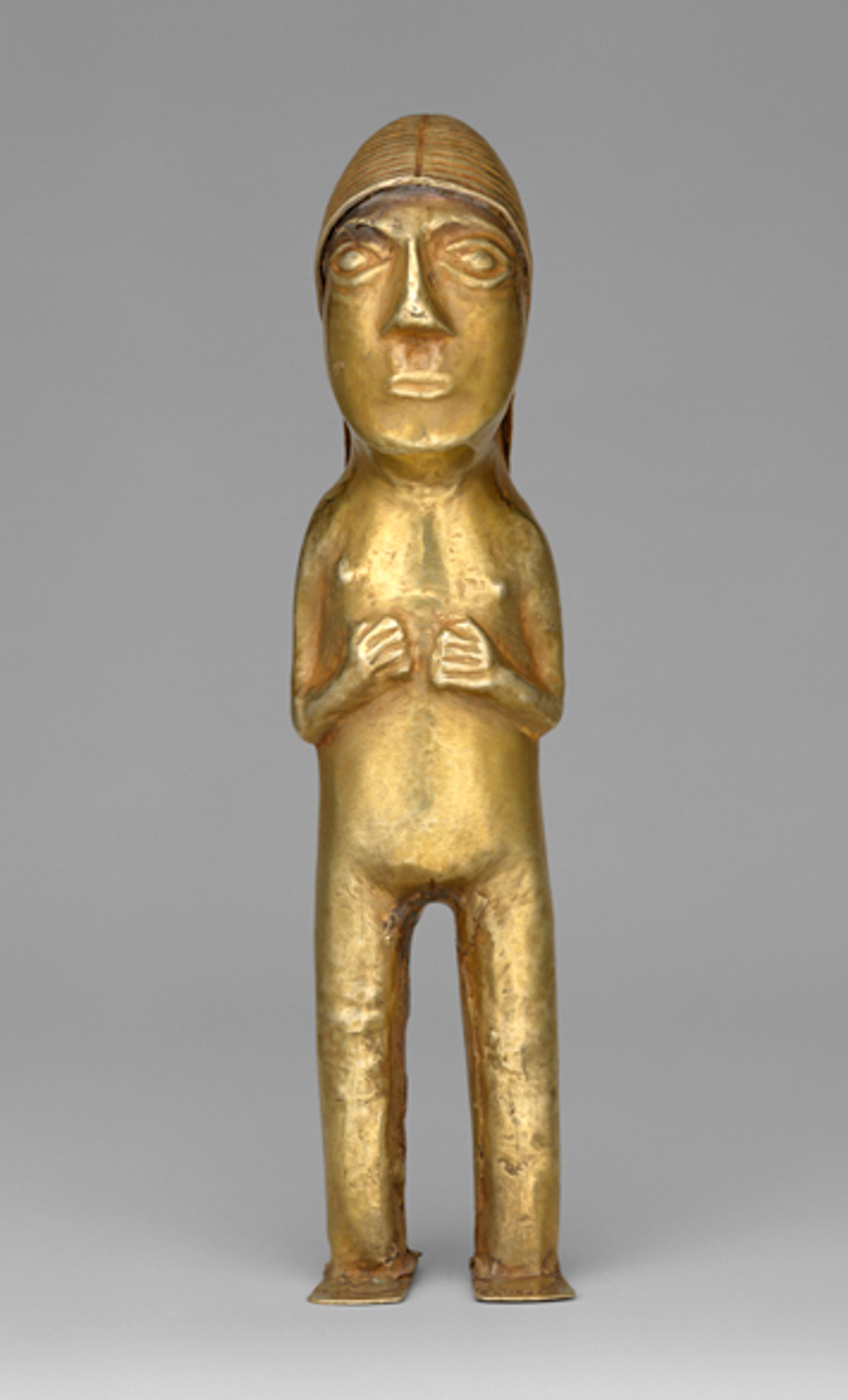
The practice of creating scaled-down versions of garments did not cease with the arrival of the Spaniards in the Andes in the 16th century. A small, finely woven tunic of rich colors is related to a type of tunic closely associated with the Inca royal house. In most respects it is a classic Inca-style tunic, with the characteristic red yoke, rectangular design blocks at the waist known as tocapu, and other detailing. Iconographic and technical features, however, indicate that it was made in the colonial period, perhaps to adorn a figure of the Christ Child, deftly uniting the idea of Inca royalty with that of Christ the King.
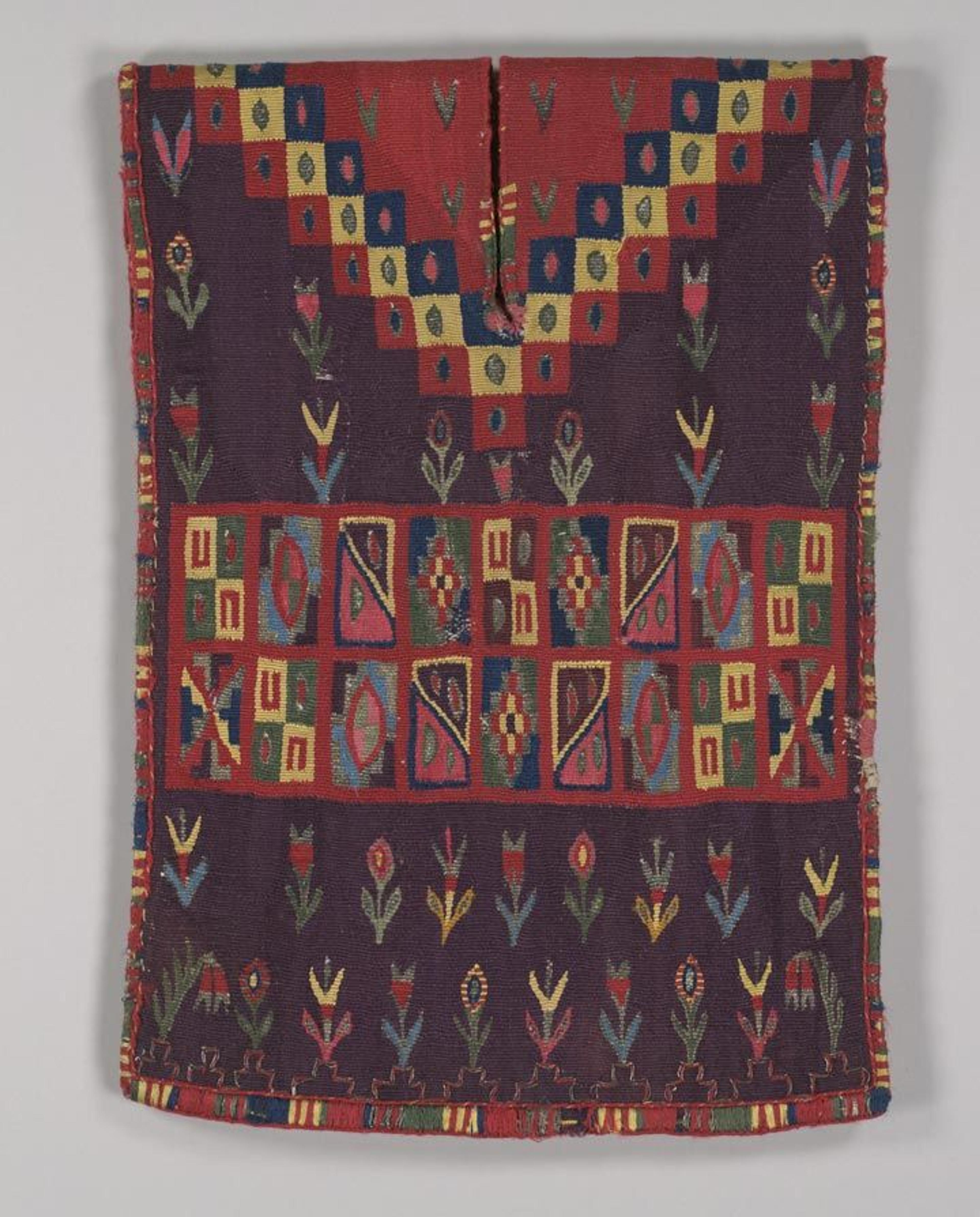
Miniature tunic (Uncu), 17th–18th century. Bolivia or Peru. Cotton, camelid hair, silk, metal; H. 14 1/2 x W. 11 in. (36.8 x 27.9 cm). The Metropolitan Museum of Art, New York, Gift of Penny Righthand, in memory of Richard I. Levine, 2007 (2007.470)
In miniature objects, big things are boiled down to their most important features—the key components needed to convey larger ideas. The small scale triggers a different sort of interaction with the viewer and allows for great mobility: as heirlooms passed down from generation to generation, and as objects carried great distances and, indeed, great heights. One of the most striking aspects of small-scale works is that they demand close scrutiny and foster an intimate viewing experience. The models in Design for Eternity invite close looking, and they repay with the pleasures of discovering a small detail or a larger understanding.
Further Reading
Beardsley, John, ed. Landscape Body Dwelling: Charles Simonds at Dumbarton Oaks. Washington, D.C.: Dumbarton Oaks Research Library and Collection, 2011.
Hamilton, Andrew J. "Scale and the Incas." PhD diss., Harvard University, 2014.
Kee, Joan, and Emanuele Lugli, eds. To Scale. Chichester: Wiley Blackwell, 2015.
Pillsbury, Joanne, Patricia Sarro, James Doyle, and Juliet Wiersema. Design for Eternity: Architectural Models from the Ancient Americas. New York: The Metropolitan Museum of Art, 2015.
Reinhard, Johan, and Maria Constanza Ceruti. Inca Rituals and Sacred Mountains: A Study of the World's Highest Archaeological Sites. Los Angeles: Cotsen Institute of Archaeology Press, 2010.
Stewart, Susan. On Longing: Narratives of the Miniature, the Gigantic, the Souvenir, the Collection. Durham: Duke University Press, 1993.
Related Links
Design for Eternity: Architectural Models from the Ancient Americas, on view at The Met Fifth Avenue through September 18, 2016
MetMedia: Ancient Peruvian Whistling Vessel
MetPublications: Peruvian Featherworks: Art of the Precolumbian Era, by Heidi King, with essays by Mercedes Delgado, Mary Frame, Christine Giuntini, Johan Reinhard, Ann Pollard Rowe, and Santiago Uceda (2012)
Joanne Pillsbury
A specialist in the art and archaeology of the ancient Americas, Joanne Pillsbury (PhD, Columbia University) was previously associate director of the Getty Research Institute and director of Pre-Columbian Studies at Dumbarton Oaks. She has published widely, including Guide to Documentary Sources for Andean Studies, 1530–1900; the Alfred H. Barr, Jr., Award recipient Ancient Maya Art at Dumbarton Oaks; and Past Presented: Archaeological Illustration and the Ancient Americas, which was awarded the Association for Latin American Art Book Award. Her 2017 exhibition catalogue, Golden Kingdoms: Luxury Arts in the Ancient Americas (prepared with Timothy Potts and Kim Richter), was the winner of a PROSE Award for Excellence.
Selected publications
MetPublications: Selected Publications by Joanne Pillsbury
Academia.edu: Publications by Joanne Pillsbury